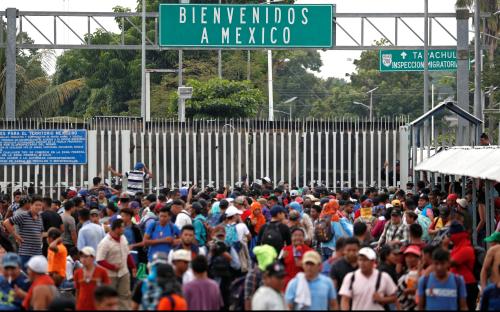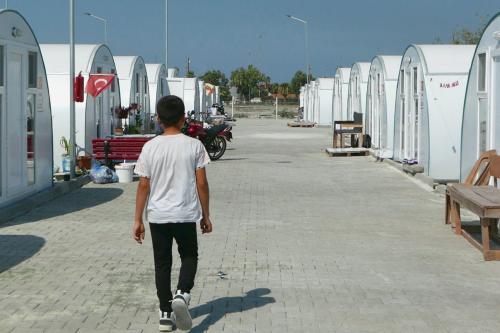The January 8 address to the nation by President Trump about the illegal immigrant crisis rooted in the migrant caravans from Central America was based on two falsehoods: This is not a crisis and the migrants are not illegal.
In fact, the number of apprehensions on the southwestern border of the U.S. is at its lowest point since the early 1970s, though recently, the number of families being apprehended at the border (consistent with the idea that these people are fleeing violence altogether as families) rose.
According to U.S. Citizen and Immigration Services, to request asylum in the U.S., applicants must be physically present in the country or make their request at a port of entry. In other words, there is nothing illegal about people at the border submitting asylum claims (those claims can be denied, too, without making so much noise about it).
It looks like the president hasn’t read the law.
Nonetheless, President Trump keeps looking for a solution where there isn’t any.
Asylum requests will persist with or without a wall; as my economist colleagues Treb Allen, Caue Dobbin, and Melanie Morten have shown, physical barriers do little to stop illegal crossings. In fact, almost half of the undocumented migrants in the U.S. are visa overstayers who entered the country legally. A wall cannot stop that.
Protecting the borders is crucial, but doing so requires coordination. That is why the Trump administration’s decision to pull out of the Global Compacts on Migration (GCM) and on Refugees (GCR), adopted by most country-members of the United Nations, was ill advised. The withdrawal constituted a big disservice to the American people, and in particular, to the ability of the government to safeguard the border.
In fact, almost half of the undocumented migrants in the U.S. are visa overstayers who entered the country legally. A wall cannot stop that.
The agreements are meant to serve as connecting platforms that allow countries to collaborate so as to better manage migration flows while helping migrants and potential asylum seekers make informed choices ex-ante. All this while reaffirming each country’s sovereignty to control their borders.
In reality, not signing onto the compacts makes it harder—not easier—to control the borders and to maximize benefits from migration. How so?
The agreements call for multilateral investments to improve the conditions that compel migrants and refugees to flee their homes. In the case of Central American countries, where the notorious migrant caravan originated, multilateral efforts to reduce criminal drug activity could be a game changer when it comes to reducing migration flows from the northern triangle in Central America. In addition, the two compacts ask participating countries to manage borders in an integrated, secure, and coordinated manner. Such an approach would provide a platform for the U.S. and Mexico, for example, to collaborate on a mutually beneficial plan to reduce illegal crossings by investing in technologies that can be monitored by authorities on both sides, instead of a tall concrete or steel wall projected to cost American taxpayers at least $5 billion dollars.
The GCM and the GCR are structured so that countries agree to share information bilaterally as well as with potential migrants early on, helping people on the move make informed choices. A system to share information between the U.S., Mexico, and Central American countries can help potential asylum seekers assess, in advance, whether their asylum request is likely to be accepted by the U.S., which as of now they can only verify while being physically present at the border. This collaboration can also result in the issuance of standardized documentation that U.S. and Mexican authorities can use to do proper background checks, reducing processing times at the border.
This is not to say that these compacts are a panacea that will eliminate illegal crossings or other migrant caravans; but, if they had been in place, they would have helped avoid the current border chaos. Today’s sad state of affairs—fueled by the President’s own rhetoric—has even resulted in two casualties due to the mismanagement and under-resourcing of holding facilities on the American side of the border. All of this is exacerbated by the government shutdown.
In another time and era, Americans would have led by example, and identified ways to partner with other countries around this as well as other humanitarian and security challenges.
For now, we can only hope the momentum around collaborating across borders on migration and refugees will outlive this administration. Until then, the U.S. will need to keep dealing with migration on its own, under a President who claims he alone can fix it, with all the inefficiencies and risks such a hubristic stance entails.






Commentary
A wall can’t fix what global migration and refugee compacts can
January 10, 2019